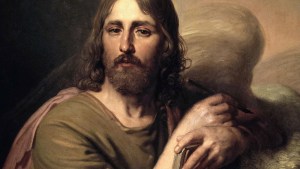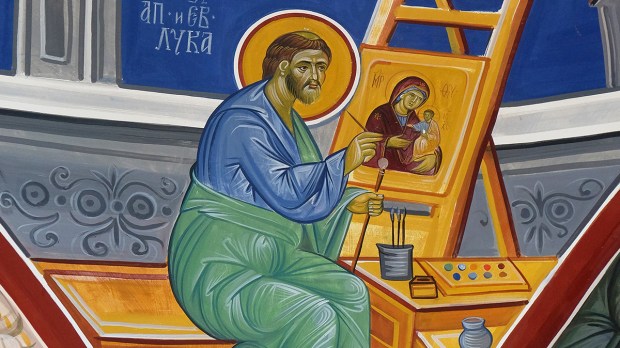Lenten Campaign 2025
This content is free of charge, as are all our articles.
Support us with a donation that is tax-deductible and enable us to continue to reach millions of readers.
Among the many patron saints of artists, St. Luke is one of the oldest. Tradition attributes to the Gospel writer many qualities that make him a perfect fit.
Inspiration to artists
First of all, his Gospel includes many scenes that have led to some of the most beautiful religious art. The Catholic Encyclopedia offers the following commentary.
[I]t is certain that St. Luke was an artist, at least to the extent that his graphic descriptions of the Annunciation, Visitation, Nativity, Shepherds. Presentation, the Shepherd and lost sheep, etc., have become the inspiring and favorite themes of Christian painters.
His patronage of artists is very fitting when viewed from this persepctive.
Portrait painter of Our Lady
The second reason St. Luke is connected to artists is the traditional claim that he painted portraits of the Blessed Mother.
For example, he is held by the Eastern Church as the original “iconographer,” responsible for writing the first icon of the Blessed Virgin Mary. Many painters throughout the centuries have depicted this scene by placing St. Luke in front of an easel, painting a portrait of the Blessed Mother holding the Child Jesus.
There exist multiple traditions surrounding what happened to the original icon(s) that St. Luke wrote. One ancient account explains that during the 5th century a Byzantine Empress brought from Jerusalem to Constantinople an icon attributed to St. Luke. The Hodegon Monastery was built to enshrine it, and later all copies of this icon became known as Hodegetria. Most believe the original image was lost during the Middle Ages.
While most historians discredit this tradition, as there is no strong evidence to support the claim, Christian artists for centuries have invoked St. Luke’s intercession, finding inspiration in his artistic skill.



